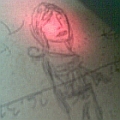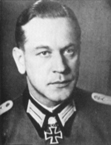Alfred
Posts: 6685
Joined: 9/28/2006
Status: offline

|
quote:
ORIGINAL: Aurorus
quote:
ORIGINAL: Alfred
1. Japanese has absolute certainty that the Soviets will not launch a surprise attack on her before August 1945.
It is of incalculable strategic benefit to the Japanese player. It allows for a draw down of the Manchukuo army which simply was not possible historically.
This is a false statement, Alfred. The Manchuko army most certainly was drawn down to bare bones, and most of the artillery and tanks were withdrawn. Soviet post-war estimates grossly exaggerated the size of the Japanese army that they confronted: claiming for example that the army was nearly 1.5 million men in size and contained 1,150 tanks. Recent scholarship agrees with the Japanese sources that the Kwantung army had been stripped completely of all its best units, including most of its tanks and artillery. In fact, the Soviets encountered and destroyed very few tanks, and only about 370 were captured; most were inoperable. Here is a source. https://web.archive.org/web/20110723082515/http://www.cgsc.edu/carl/resources/csi/glantz3/glantz3.asp#c3-15 .
I quote, "Despite its numerical strength, the Kwantung Army lacked quality. The Japanese Imperial High Command had transferred most veteran Japanese divisions from Manchuria before the summer of 1945. Hence, most remaining divisions were newly formed from reservists or from cannibalized smaller units. In fact, only the 119th, 107th, 108th, 117th, 63d, and 39th Infantry Divisions had existed before January 1945. Training was limited in all units, and equipment and materiel shortages plagued the Kwantung Army at every level. The Japanese considered none of the Kwantung Army divisions combat ready and some divisions only 15 percent ready."
Finally, Japan could have some confidence that the Soviet Union was not going to go on the offensive, because substantial lend-lease materials were flowing through Vladivostok, which the Japanese could have cut off.
Why don't you quote in full what I wrote in post #50. Then quote in full what I further clarified in responding to LargeSlowTarget. Context is so important. As you have informed as that you are professional historian you would understand the importance of context. Whilst you are doing that why don't you properly quote in context what Glantz actually wrote. I'll come back to that shortly but first let's deal with your statement that "The Manchuko army most certainly was drawn down to bare bones...". Before addressing the rest of your comments this statement needs to be clearly dissected for it goes to the heart of missing the context of my comments and also Glantz's.
The colourful language in your extracted quote is "bare bones". Not very precise and consequently open to various interpretations. I think most people would attach to those words the meaning of an emaciated structure/organisation, certainly a much smaller structure/organisation than was the case previously. In short it refers to the quantum size of the "Manchukuo army". Less commonly it could also refer to the quality of the "Manchukuo army" but this is not obviously your intended meaning were it not for the immediately following words you write of ", and most of the artillery and tanks were withdrawn". Combined with the Glantz quote you used, the context then clarifies that your term "bare bones" is intended to mean both a much smaller (quantum) and greatly degraded (quality) organisation. See how important it is to take context into account.
Although we now know you mean substantial decreases in both quantum and quality, there is still a critical contextual point missing, one that I can't seem to find any hints in your total comments on this issue. I refer to the time factor. You might claim that the Glantz quote "The Japanese Imperial High Command had transferred most veteran Japanese divisions from Manchuria before the summer of 1945" provides the time context but I am afraid that is a very weak link to rely upon. You see left unsaid is when before the summer of 1945. was this done. Were the transfers done the last week of autumn 1945? Were they done in 1944, 1943 or 1942? Just to add some piquancy were some veteran divisions rotated in at the same time some veteran divisions were moved out. One simply can't know from the Glantz quote you produced and unfortunately this is rather important contextual point very relevant to my comments which you so kindly thought were not necessary to be quote.
It would be a very desperate act of your's to now rely on the further Glantz comments you quote to provide the time context: "In fact, only the 119th, 107th, 108th, 117th, 63d, and 39th Infantry Divisions had existed before January 1945." because that doesn't really provide the time context for it is unclear whether these were veteran divisions which had been transferred out before the summer of 1945. After all Glantz does identify them as existing before January 1945 although he doesn't specifically state when they were created or whether they had seen combat. Ah but I have been somewhat naughty for in between the two Glantz quotes he did state: "Hence, most remaining divisions were newly formed from reservists or from cannibalized smaller units." When the three Glantz quotes are read in order, the inference is that those six divisions were some of the "newly formed" units. You will have to forgive my little naughtiness for I wanted to demonstrate the importance of context.
Still the Glantz quotes in the preceding paragraph don't enhance, dare I say support, your comments which I quoted previously. For now the contextual problem arises as to what is meant by a veteran division. Normal usage of the term "veteran division" is usually restricted to a unit which has seen substantial combat, has in the past performed well in combat and is expected to outperform/hold its own in combat against enemy non veteran/veteran divisions respectively. Is it now a metaphysical question to ask whether, as a question of fact, there were any veteran Japanese divisions in Manchuria to actually transfer out "before the summer of 1945"? After all the divisions located in the area had not seen much recent combat. Admittedly there had been border battles in 1938 and 1939 with the Soviets but those battles had involved a limited number of Japanese units, had not witnessed a good Japanese combat performance and the passage of time without combat (what with changes in personnel and the evolution of equipment) does tend to dull the combat prowess of units. No I don't think it is only a metaphysical question but one very germane.
It is clear to me that you have adduced the Glantz comments (including the ones I have not specifically addressed yet) to support the proposition that the "bare bones" of the "Manchukuo army" made it a pale shadow of it's previous (although time period is still missing) martial prowess and the objective empirical evidence, rather than just relying on your's and Glantz's comments, is found in the performance against the invading Soviets from 9 August 1945. Certainly that is what I would try to do, back up judgements (for ultimately that is all your's and Glantz's comments are) with some objective empirical evidence.
So how exactly do you reconcile the poor combat performance inferred from the preceding selective Glantz quotes with this Glantz quote: "As for the argument that the Japanese lethargy reflected the low quality of their troops and poor esprit de corps, the combat record of units in the ensuing campaign dismisses that charge." Then a little further on he also states: "While many units never saw combat, those that did aquitted themselves well". But wait there is an even better Glantz quote to be presented. In the Conclusions Section, where the loose ends are tied together, assessing the performance of the Kwantung Army in August 1945, (remember this is the very same force that had lost all its veteran units and according to you was only a "bare bones" force) against the Soviets, Glantz states:
"In terms of leadership, equipment, and manpower, the Kwangtung Army of 1945 certainly was not the same army as it was in 1941, but it was also not so ineffective as some analysts have claimed. In many instances, the marginal replacements of 1945 performed well on the battlefield, whenever they were permitted to fight."
Somewhat not compatible with "bare bones" meaning a severely degraded in quality terms force.
This all rather brings us back to that metaphysical point I raised as to whether the pre summer 1945 transfers were of truly veteran units. Which is a good segue into my earlier promise of returning to the context of my comments you so kindly omitted to quote.
At no stage did I refer to veteran units. I did refer, in the context of the AE game the Manchukuo garrison requirements, to specific game devices, namely AFVs and artillery. I also referred to outside of the game the importance accorded by Japan to keeping AFVs but I don't ascribe any veteran status either to the game or the historical position. Nor did I ever say no historical transfers occurred.
As I know that English is not your native language I will give you the benefit of the doubt and inform you that in the second sentence of the only two sentences of mine you do quote out of context, and which lead you to claim I have made a "false statement" (and therefore by extension I lied and thus I am to be seen as a liar), I use the indefinite article "a", not the definite article "the". If I had used the definite article then that second sentence would have had the meaning that it was historically impossible for any drawdown to have occurred historically. Instead the indefinite article turns the sentence meaning into drawdowns which were historically impossible, and which when read in context with my other non quoted comments, specifically means AE player unit transfers which were not historically possible. Context, context, the bane of historians.
I did earlier point out the value of empirical evidence to back up comments/judgements. So without further ado let's dive back into the Glantz paper you so kindly provided. I wouldn't want you to think I had snubbed your generosity in providing it by not reading it, especially when it contradicts your position and supports mine.
We begin with the time context. 1942 saw the creation of three armoured divisions out of smaller in situ armoured units. These armoured divisions remained until the first quarter of 1944. Why were these units not moved out in 1942 or 1943? Was the war going along so splendidly for Japan that there was no where on the frontlines where these unemployed units could not have been gainfully employed. After all you yourself said above that "Japan could have some confidence that the Soviet Union was not going to go on the offensive, because substantial lend-lease materials were flowing through Vladivostok, which the Japanese could have cut off." Quite clear that in your judgement that there was no impediment to their transfer well before the first quarter of 1944. Could there be any validity to my unquoted statement that:
"because an AV is the same as any other AV for the purposes of the garrison rule, every single Japanese AFV can be withdrawn and sent elsewhere whereas historically there was never any thought in the high command that they could afford to be caught by a surprise Soviet attack without the bulk of their armour being present."
Let's bring Glantz into this debate point. He makes the observation that until 1944, the Kwangtung Army planned for the offense. This then changed in September 1944 to planning for a "realistic defence" and in 1945 to conducting a defend the borders and defending deeper in Manchuria. Whilst not spelled out by Glantz it is inconceivable that Japanese planners could contemplate offensive action against the tank heavy Soviets without employing their own armour.
The April - December 1944 time period covers the Ichi-Go campaign. At last a use for those unemployed armour units up in Manchuria was found. What wasn't sent to participate in Ichi-Go was sent elsewhere. Read my comments in context, unlike the Japanese High Command, AE players tend to not wait until early 1944 before moving these armoured units, often into China to form in early 1942 the Japanese PanzerArmee which tramples the underequipped anti-tank forces. Now why didn't the historical Japanese High Command come up with the same bright idea? Glantz and I provide ideas (in a situation where the official Kwangtung Army records were destroyed). Is Glantz a liar too? What can be said with certainty is that by early 1944 the strategic considerations which had kept those units in Manchuria no longer trumped other strategic considerations for their use.
In AE, the Manchukuo Garrison starts off with more than 12,000 AV. The Garrison rule allows for a reduction of more than 1/3 without even taking into account the type of AV withdrawn or any units which do not have an AV. In the game, the garrison rule is met by any Japanese unit which is located in the relevant area irrespective of whether it is or isn't attached to the Kwangtung army. This is not the case when Glantz is describing the size of the Kwangtung Army before the Soviet invasion. Firstly Glantz does not accept a figure of 1.5 million Japanese troops so you mentioning it is somewhat of a red herring. One has to drill down to footnote #4 of chapter 3 for the hard data on the differing troop estimates. The lowest Japanese source estimate for Manchuria and North Korea (which is not the total AE garrison zone) is 713,724. This is a figure which needs to be treated with caution for as previously mentioned the Kwangtung Army records are lost and according to Glantz the Japanese sources on casualties is definitely too low. Ultimately Glantz accepts a figure of about 1.2 million Japanese troops in the area covered by the games garrison zone. Secondly, Glantz clearly states that the 1941 Kwantung Army was 1 million men. Whilst it is unclear whether that 1941 figure excludes other non Kwangtung Army units located in the AE garrison zone, it is impossible to see how anyone can maintain that in the quantum meaning of "bare bones" the Kwangtung Army in August 1945 meets that definition.
As to the number of Japanese tanks, the figure accepted by Glantz is 1,150. Yes the Soviets only claimed the capture of just under 370 tanks but they give no figures for destroyed Japanese tanks. In any case the relevance of this is very questionable for by this stage of the war I remind you about indefinite articles.
I went through Appendix 1 and counting only the AE non AV units which still remained in the garrison zone when the Soviets invaded there was a total of:
Artillery
9xrgt
7xbn
1xbattery
1xcompany
1x "unit"
Mortar
4xbn
1xcompany
Anti-Tank
3xbn
AA
1xrgt
6xbn
1x"unit"
Engr
2xrgt
7x"unit"
I wonder how many Japanese players leave that many units in the garrison zone by mid 1942 let alone still in August 1945.
Remind me how all of Glantz's work proves me to be wrong, in fact a liar, and you correct.
Alfred
|
 Printable Version
Printable Version
















 New Messages
New Messages No New Messages
No New Messages Hot Topic w/ New Messages
Hot Topic w/ New Messages Hot Topic w/o New Messages
Hot Topic w/o New Messages Locked w/ New Messages
Locked w/ New Messages Locked w/o New Messages
Locked w/o New Messages Post New Thread
Post New Thread